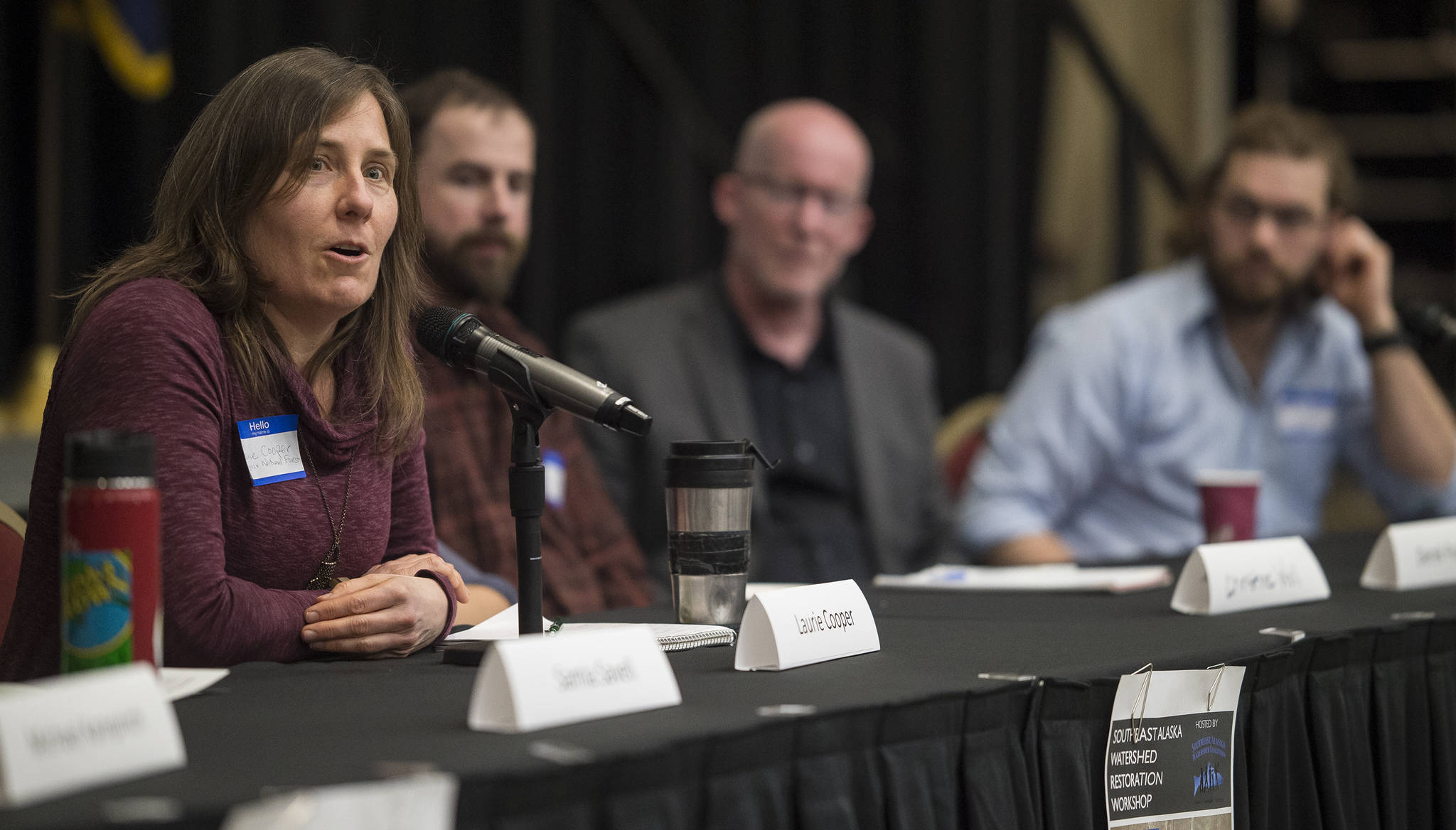Nonprofit conservation groups, tribes and government agencies are gathering this week at the Southeast Alaska Watershed Restoration Workshop to talk about the future of restoring and monitoring Southeast Alaska’s pristine water.
With more than 900 watersheds in the Tongass National Forest, and more on Southeast’s state, tribal and private land, there’s a lot to talk about.
Watersheds, or areas of land that separates waters flowing to different rivers, basins or seas, are important when gauging the health of fish-bearing habitat. Protect a watershed, the thinking goes, and protect the fish that depend on it.
The U.S. Forest Service does a lot of this protection work on Tongass National Forest land. But the Southeast Alaska Watershed Coalition, a nonprofit with branches in Haines, Skagway, Prince of Wales and Juneau, pitches in, especially on city, state and tribal lands.
That work often means replacing culverts to allow easier passage for salmon, eliminating invasive plants, or creating an online marketplace for local farmers and gatherers to sell their products.
In Haines, its the Takshanuk Watershed Council that takes up that mantle. Construction worker and wildlife biologist Derek Poinsette is the Executive Director.
There are a lot of similarities between nonprofit restoration work and general contracting work, Poinsette said. A general contractor does some of the work themselves but also coordinates with other subcontractors to finish the job. Similarly, the Takshanuk Watershed Council acts as a middleman, working with all the stakeholders in a watershed — the fishermen, hunters, hikers, government agencies, private landowners and others — to fulfill a restoration goal.
Instead of clients, however, Poinsette has to be more creative with funding, applying for grants and matching funds from government agencies, larger nonprofits and private funds.
“I spent a lot of the winter doing just that,” Poinsette said during a lunch break interview at the Elizabeth Peratrovich Hall.
Federal funding sources are getting a bit “squirrelly” lately, said the USFS Jim Capurso, a keynote speaker at the workshop. He’s had to look increasingly to private funding sources to wrangle money. Poinsette also said he’s had to look increasingly to non-governmental funds to fill the gaps as funding from agencies like the Borough of Land Management are seemingly being tied up in Washington, D.C., he said.
Thankfully, most of the Tongass’ watersheds run clear and healthy, according to hydrologist Julianne Thompson, Watershed Program Manager for the National Forest Service.
“The Tongass occupies a really important and unique niche in the National Forest system because we are really aware of the economic and cultural value of salmon, here,” Thompson said.
The USFS categorizes the health of watersheds using a three-part system, Thompson explained in her presentation, where watersheds are scored with a one, two or three in 12 health criteria. Those scores are compiled and averaged to a give an overall picture of a watershed’s health. An average score of one means a watershed is functioning properly in all criteria, a two means proper function is at risk, while three means the proper function of the watershed is impaired.
Most of the Tongass’ watersheds are in good shape, Thompson said. In USFS terms, most of the Tongass’ watersheds are “functioning properly.”
“When watersheds are functioning properly they are resilient, meaning they recover rapidly from both natural and human disturbances,” Thompson said. “This is becoming a more and more important concept as we consider the effects of a changing climate.”
None of the Tongass’ watersheds scored a three, while only one watershed scored a two by USFS analysis. But that doesn’t mean there isn’t work to be done, Thompson said: The USFS is focusing their work on watersheds that scored in the 1.4-1.6 range.
Watersheds scoring in that range are the “low-hanging fruit,” Thompson said, that the USFS can make a big dent in restoration goals.
The Juneau chapter of the Southeast Alaska Watershed Coalition is called the Juneau Watershed Council. Currently, they’re assessing the needs Jordan Creek and Duck Creek in the Mendenhall Valley.
• Contact reporter Kevin Gullufsen at 523-2228 and kgullufsen@juneauempire.com. Follow him on Twitter at @KevinGullufsen.
